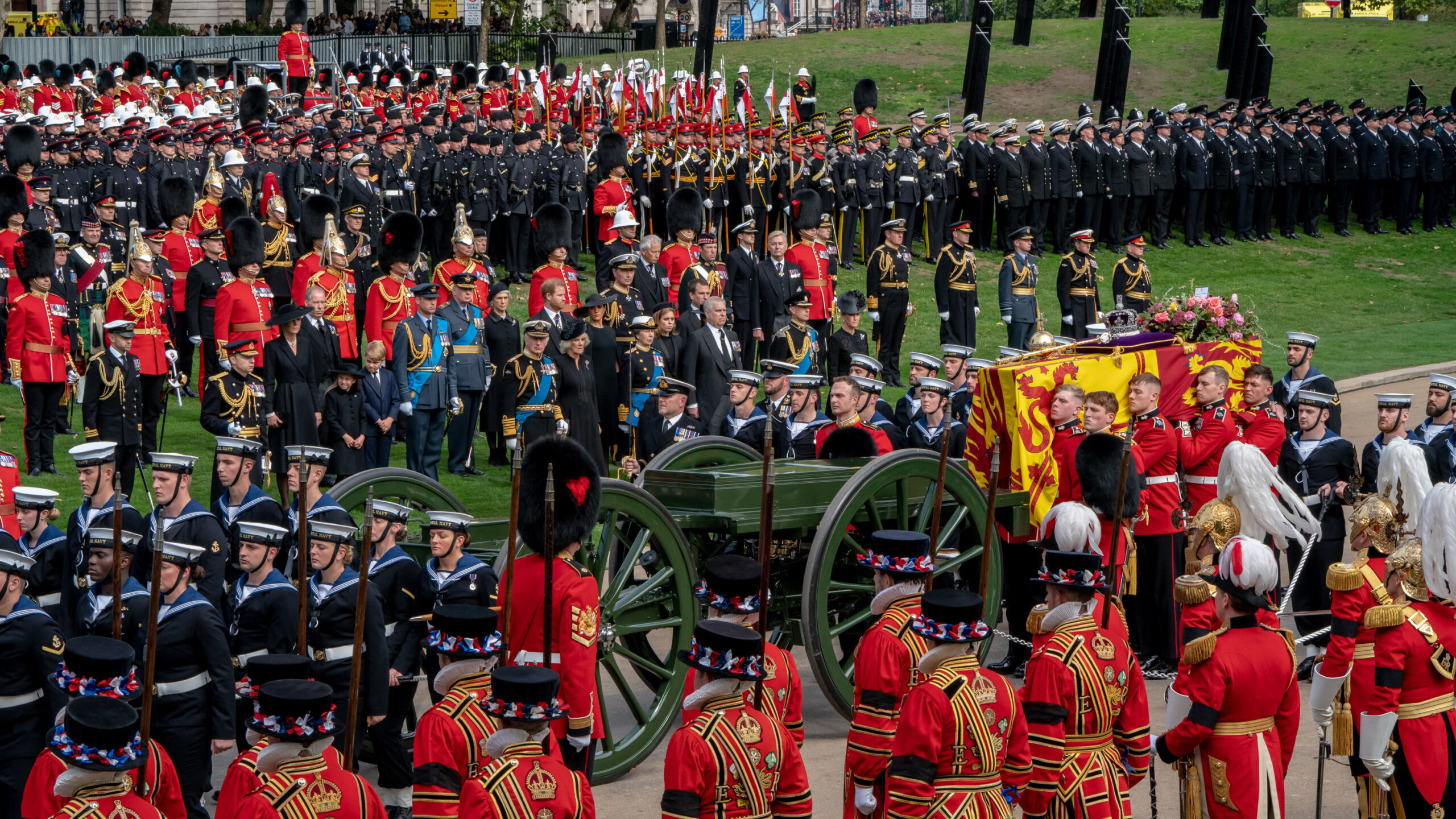On September 19, 2022, the world watched as the royal family gathered at St. George’s Chapel in Windsor Castle to bid farewell to Queen Elizabeth II.
Among the solemnity of the occasion, a brief interaction between the Princess of Wales, Kate Middleton, and Meghan Markle caught the eye of royal observers.
As the family made their way to their seats for the Queen’s committal service, a momentary lapse in communication revealed underlying tensions that have long been a topic of discussion among fans and commentators alike.
As Prince William led his family into the chapel, he had the task of guiding them through the procession.
He instructed his eldest son, Prince George, to pause before they moved down the row of chairs.
However, Princess Kate, seemingly unaware of her husband’s instructions, attempted to continue walking forward.
This misstep prompted William to signal her to wait, creating a slightly awkward moment where Kate had to step back, allowing Prince Harry and Meghan to pass through.
Despite its brevity, this interaction resonated with many viewers who were closely watching the proceedings.
The subtle shuffle by Kate, coupled with the somber atmosphere of the funeral, drew attention, especially given the ongoing dialogue surrounding the relationship between Harry, Meghan, and the rest of the royal family.
Since the couple stepped back from their royal duties in 2020, discussions about their strained relationships have been rampant.
While both Kate and Meghan have maintained a cordial public facade, this fleeting moment served as a reminder of the complexities that lie beneath.
The media has often highlighted the tensions, particularly following the explosive interview Harry and Meghan gave to Oprah Winfrey in 2021, where they made serious allegations against royal family members, including claims of bullying and racism.
This interview sent shockwaves across the globe, reigniting debates about the monarchy’s dynamics.
The funeral itself was a deeply significant event, marking the end of Queen Elizabeth’s remarkable 70-year reign.
Attendees included Prince William, Princess Kate, and their two eldest children, Prince George and Princess Charlotte, alongside Prince Harry and Meghan Markle.
It was a rare public appearance for the two couples together since Harry and Meghan stepped back from their senior royal roles.
Queen Elizabeth passed away on September 8, 2022, at Balmoral Castle, Scotland, at the age of 96.
Her death marked the conclusion of an era, as she was the longest-reigning monarch in British history.
The funeral on September 19 saw her laid to rest in the King George VI Memorial Chapel, next to her husband, Prince Philip, who had passed away the previous year.
Prince Harry and Meghan were in the UK at the time of the Queen’s passing due to a working trip.
Initially planning a short visit, they opted to extend their stay upon learning of her declining health.
Their presence at the funeral was viewed as a sign of respect for the late Queen, who had shared a close bond with her grandson throughout his life.
King Charles III expressed his profound sadness following his mother’s death, describing it as a moment of great sorrow for both him and the family.
His heartfelt statement reflected the deep impact Queen Elizabeth had on people around the world, acknowledging that her passing would create a significant void in the hearts of many.
Despite the complicated family dynamics, the royal family came together during this time of grief to honor the Queen’s legacy and reflect on her extraordinary life of service.
The event not only marked a farewell to a beloved monarch but also highlighted the complexities of family relationships within the royal household, reminding everyone that even in moments of shared sorrow, the past can cast a long shadow.
As the world continues to mourn the loss of Queen Elizabeth II, the subtle interactions within the royal family serve as a poignant reminder of the ongoing challenges they face.
The dynamics of love, duty, and familial ties remain ever-present, even in the midst of profound loss.
Related Stories

